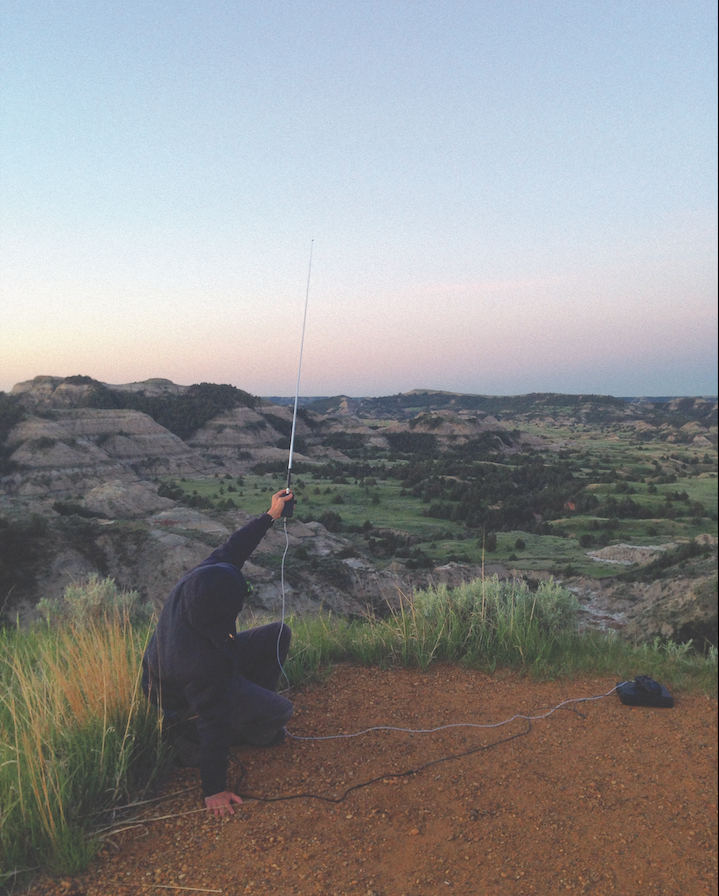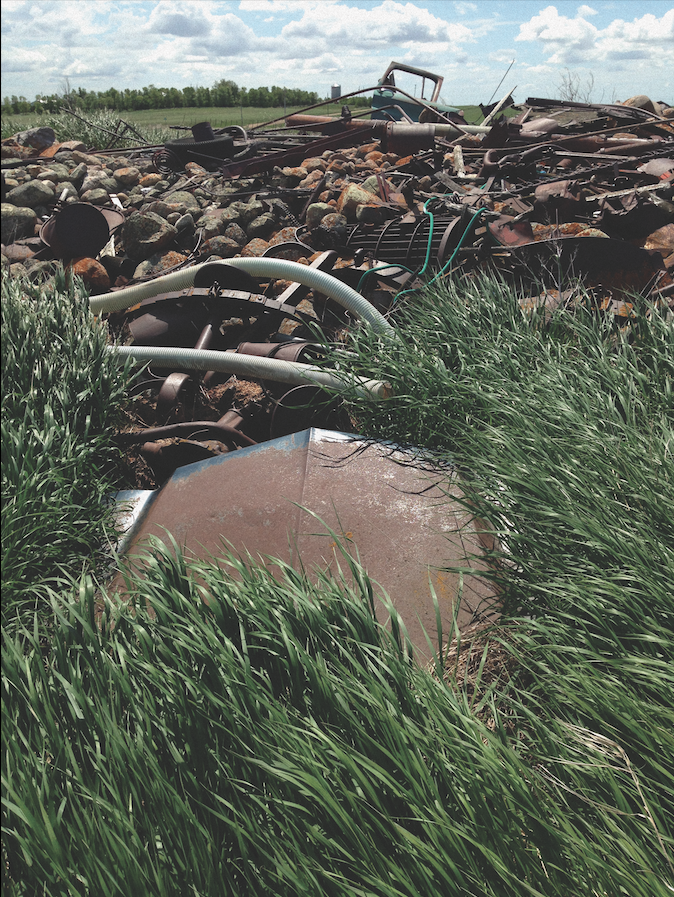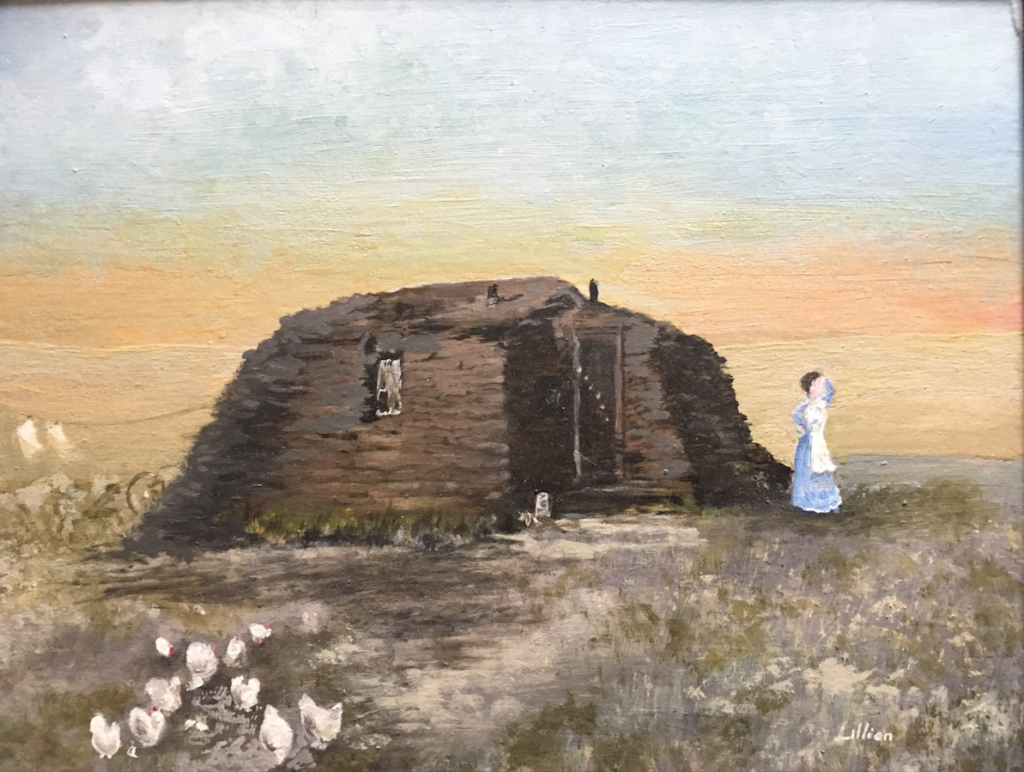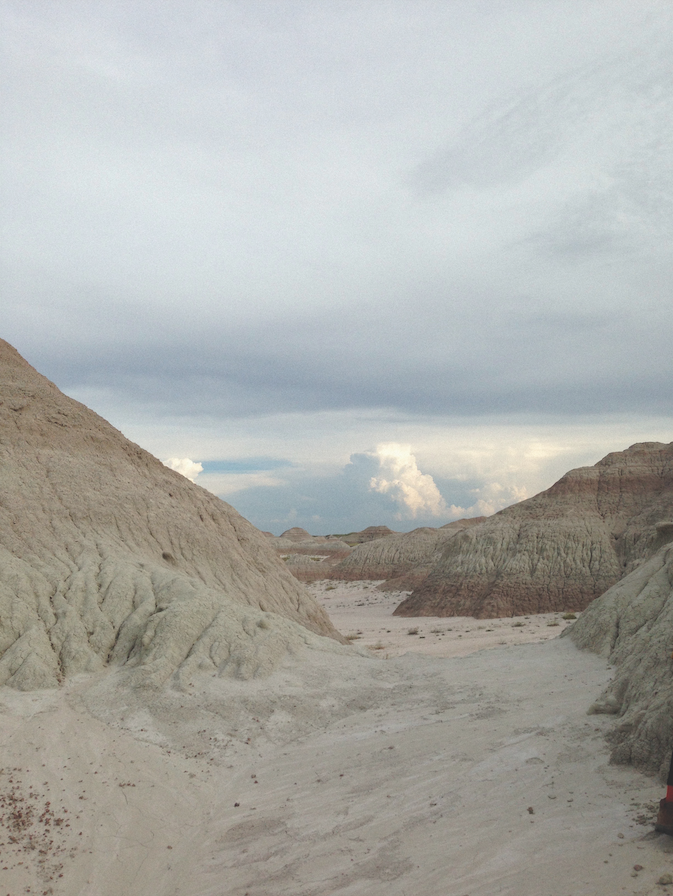Shawn Hansen’s new cassette album is out on TIEP may 28th 2018! It’s called Radio Badlands and is a 70 minutes long phonographic + impro piece. TIEP-man asked Mr. Hansen a couple of questions about the process etc. Hope you find the time to read a bit while you’re here.
Maybe you can turn on the radio in the background while reading?: tiep.bandcamp.com/album/radio-badlands
1. What were your musical beginnings and how did you find your way into electronic music?
Besides studying music formally, I think the origins of music making and interest in electronics stems from the turntable, radio, and making mix tapes (or what my family called Misc. tapes, short for miscellaneous). My father was a record salesman in the 1950’s and 60’s before I was born and the main turntable in the house was an altar of sorts; a place of magic, solitude, togetherness, and spiritual pursuit. Even though I was studying traditional acoustic instruments at the same time, I did not initially differentiate between playing music on the piano versus the turntable. It wasn’t until a teacher of mine in college, who introduced me to the EMS synthi AKS, an analog synthesizer from the early 1970’s and Pierre Schaeffer’s tape music, Musique Concrete, that I started to see the application of exploring this line between playing music on an instrument and playing music on a turntable.
2. You were using phonography in the making of your album. How and why does it work? And how did you first come in contact with these kinds of tools?
Phonography, or field recording or sound hunting has been in the mix for me sonically back to when I originally was making tapes. I was making Misc. tapes direct from recordings, but I would also make recordings onto cassette of the radio, citizen-band radio, and found sounds around the house with a shoebox recorder. I started to use walkie-talkies to make recordings from a distance of close-up sounds and creating radio feedback. I used a Sharp top-loading cassette recorder until I was living in New York, and the deck wore out. Just prior to that Mini-Discs came out and that opened up the possibilities of portable recording and very high-fidelity recordings for relatively little money. I would invite people over to eat and hang out at home and I’d have people take turns wearing the headphones while the Mini-Disc recorded our hang. That recorder wore out as well and I went for a number of years without doing field recordings but in the last few years I rediscovered the joy and awe of hunting sounds with a recorder. I recommend it to everyone.

Phonographer in action
3. Can you tell us some more about the non-tech sides of your album – your trip to the Dakotas?
I had been thinking about field recordings and I was also investigating natural radio, so when a trip started to formulate around putting my grandparents’ ashes to rest in a cemetery in North Dakota, I decided it was time to try to create an album documenting a different type of performance; one abandoning the conventional public stage and a recording process that happened outside of the home or professional recording studio. My parents and brother and I had visited South Dakota when we were kids, so my brother and I tried to recreate some of the same events that had occurred thirty years before as we drove up to North Dakota, staying in the same cabin and seeing the same tourist attractions.
After the burial, my wife and I decided to pursue other family history and I had researched and found the plot of land that my great grandmother had homesteaded as a young woman after emigrating from Norway. In a rental car, we drove for four or more hours on dirt roads and did not see one other living soul. We found the plot and walked around. I shot some photos but I was too spooked to doing any recording. Not so much about ghosts, but more about being so isolated from other humans and trespassing on someone else’s property. It felt amazing to find the land, but I also realized how significant it was to see how insignificant and mundane the land was. It is hard to explain, but I would liken it to seeing something in real life in color vision after only seeing in in a black and white photo. There was zero fantasy about this flat and desolate place. If I could do it over again I would have recorded there, but that’s how it goes. Sometimes the hardest thing to do is to hit record, or play the first note.

Homestead rock pile (trespassing)
From here we planned on camping in national parks for the next week or more and I would try to record on-site improvisations while doing field recordings. It was also a goal to capture the dawn chorus, a natural radio phenomena, present in the VLF radio band. Both of these goals informed our movements and choices of what and where to go to a great degree. Finding unique sounding places, or waking up well before dawn in order to find a place as far away from the electrical grid as possible gave us a structure for our adventure.

Painting from old time Dakota
4. Working with the album – did you think about concepts like the spiritual, the natural and the technological world?
Definitely thought about the natural world. As phonography can often be about ecology or non-human sounds, this album certainly pivoted around the national park landscapes of the badlands in North and South Dakota. The main reasons for this were the fact that we wanted to camp and be out doors, but also the VLF receiver only works when you are away from the electrical grid. The spiritual was not a huge driving force in the album, but I would suggest that this idea of nature is tied closely with my definition of the spirit, so maybe it was a part of it. Ironically, technology was not important, conceptually, to the album. Though I am using electronic recording instruments and musical instruments, they felt and feel transparent to me. Most compositional and performance work for me is concerned with sound at a very fundamental level and electronic instruments and the recorded medium can be stripped down to nothing and built back up as needed, without the baggage of the history of a particular instrument’s historical repertoire.
5. How do you understand/explain the concept/word “radio”?
Radio, like the turntable, has a magical place in my cosmology. Sound is an invisible medium, and radio is cloaked in yet another veil needing to be decoded and amplified by circuitry to be able to hear it. I would hazard that radio, as we know it today, is a technological version of what we already understand, subconsciously, as telepathy, esp, sixth sense, intuition, coincidence, precognition etc. Traditionally, radio was a community tool, and the listeners, though perhaps alone, knew that others were listening to the same broadcast at the same time. Most distributed mediums are no longer synced in this way, and may be consumed at any time for the listener’s convenience. Back in 1984 when I was making random cassette recordings, I created my own imaginary radio station, KJEA-radio, and started to curate the cassettes in this fashion. I kept up the concept loosely, until in 2001, while living in New York, I built my first radio transmitter with the help of Brenda Hutchinson. KJEA-radio became a very active conceptual framework for me to either conceptually or literally transmit sound, ideas, space or time. I’m happy to champion the idea of radio in any way, shape or form these days, taking great inspiration from Buckminster Fuller’s ideas about radio and its role in human social evolution.
6. And the Badlands – what’s that?
The badlands are a region in the western parts of both North and South Dakota states. Most people refer to the Badlands as only the park in South Dakota, but this is a misconception. Theodore Roosevelt Nation Park in North Dakota is also an area of badlands and is quite unique. It is the least visited National Park in the contiguous United States. Great for visiting, but certainly more people should go! The Badlands in South Dakota are more extreme with less vegetation. It resembles the moon or mars in ways, because of this lack of vegetation and I think many film crews have utilized this resemblance. Go check out these parks for yourselves!

7. Can you tell us a little bit about the other instruments used on the album – OP1 and Standuino 2pi?
Searching for portable instruments, even just something to easily load and carry to gigs after playing a large Farfisa organ for years, lead eventually to the OP-1 by Teenage Engineering out of Sweden. It is an unbelievably clever and intuitive instrument, based on early smart phone technology. Since it was developed by a design company, rather than a company who makes musical instruments, it was able to shed the somewhat boring and overly codified and typical synth hardware features, like a mod and pitch shift wheel. Filters that only do “X” and oscillators that always sound like “Y” and have “Z” functionality. Instead the instrument has a wild variety of features, but each with very narrow parameters, making experimenting and exploring the instrument very feasible and enjoyable. It has sampling capabilities so I was able to capture natural sounds from the location I was in and use that in improvising with the same environment.
The Standuino 2pi is a rare instrument from the Czech Republic based on arduino tech. It is a white noise and sine wave oscillator synth (two of my favorite sound building blocks), with no discernable way to navigate or learn how to use the instrument. It just has five knobs and three function buttons all unlabeled and fifteen slots to change the sounds you can use and when you power it off you have to start all over from scratch. It is very portable and great for drones and visceral sonic textures.
8. What are your thoughts about improvisation vs. composition in music?
The short answer is improvisation is instant composition. For me, I was brought up on jazz and improvisation plays such a featured role in the genre, more so than other popular musical forms. The jazz avant-garde was my gateway to fully improvised music apart from any one form or genre of music. Composition is basically organization of music, whether it be the traditional paper notation or the recorded medium, but improvisation, in its purest form, is more about the organization of sound. It is a more general practice, and this discipline, either solo or with other improvisers, can greatly inform the compositional process. I often reduce these functions down to basics in order to utilize their unique creative perspectives: phonography is listening, composition is contemplation, and improvisation is action.
9. What kind of connections do you see between your work as a piano technician and the music you make?
Even though I was interested in sound and acoustics as it pertained to music, I was shocked and delighted on how challenging it was to learn how to tune pianos by ear. I had to scrap the way I used my ears, almost entirely, and start over from scratch. It has made me a much more specific listener, given me a greater endurance for listening and discerning between similar sounds, and a propensity towards sonic and mechanical problem solving. Most of my piano clients do not have an understanding of my musical practice but most of my musical friends and followers know about my piano technology career. I love that I get to work with sound all day every day.
10. What are your upcoming musical projects? Other material coming out, concerts, etc.?
This weekend I am playing a dream set for a camping music festival in Kansas City. I’ll be playing a relatively short set at 2:20am till around 4:00am. I’m looking forward to it. The world is pretty quiet at that time of night/morning, but some robins in this area start up around 4am so they might join in my set. Other than improvised electronics and phonography, I am interested in reinvestigating the music I was raised on, jazz big band music spanning from the 1930’s to the 1970’s. This new material may take years to form, but I am excited to have started the exploration this year. Another recording session with Chris Forsyth’s Solar Motel Band is penciled in for 2018 and Sean Julian is visiting Kansas City to work on our first duo recording of Buchla Music Easel and Ciat Lonbarde duets. Last but not least, I have been collaborating with the writer, Cyrus Console, for the last year developing a set of films of sound and visual text, and a way of performing these films live. It has been a beautifully paced collaboration; it’s always so exciting to improvise with someone outside of the musical context.
11. Anything else you would like to say to the world?
KJEA radio! killer jams every afternoon
the radio radiates
love casts no shadow
